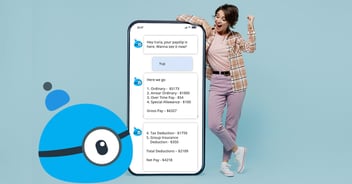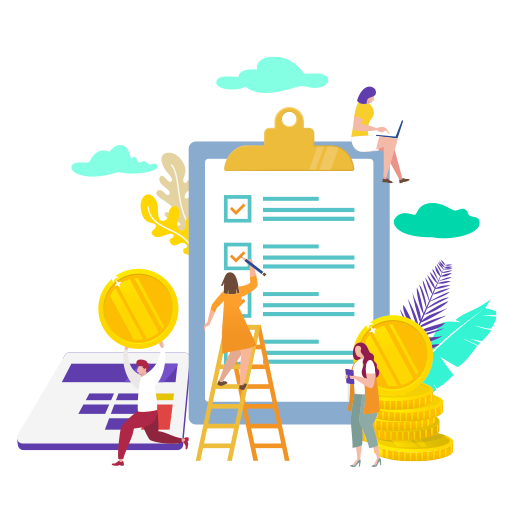
- Home
- Global Payroll
- HCM And Payroll – Before And After Covid
HCM And Payroll – Before And After Covid
Published :

Productivity is the biggest indicator of a healthy organizational culture and HR practices, and the definition and indicators of productivity have changed over time. However, the recent outbreak of COvid-19 has had a drastic impact on organizational processes and how departments like HR and Payroll function. The procedures followed by HR and Payroll Post Pandemic focus on computing productivity rather than putting the time spent on doing the job on a higher pedestal. Moreover, most of the Post Pandemic HR activities now run on autopilot, with the help of HCM and payroll software.
One can compare how the onset of this Pandemic and the subsequent lockdowns have led to innovation in the HR and Payroll procedures. HRIS and Payroll Intelligence have changed the dynamics of monitoring productivity. The conventional HR and Payroll practices are becoming obsolete, bit by bit. This calls for innovation in the Global Payroll practices. Automation is overtaking the majority of the department's responsibilities which were handled manually before the onset of the pandemic. A more intuitive approach to HR practices is required, as unforeseen circumstances render more conventional practices obsolete. This is where payroll software and digital payslip systems come into play.
Let us discuss how changed variables and conditions have forced Innovation into HR and Global Payroll practices.
|
Variables |
Pre Pandemic |
Post Pandemic |
|
Remote Working |
Before the onset of the Pandemic, business travels used to be frequent for HR professionals. This would cost organizations a lot of money. |
With the onset of the Pandemic and the following lockdowns, a sharp increase in remote working was observed, which jumped from 30% to 48%. Online meetings, remotely controlled machines, and AI have allowed workers to carry out their tasks from the comfort and safety of their homes. |
|
Indicators of performance |
Before the onset of the Pandemic, the HR and Payroll departments would depend upon the time spent in the office as a major identifier of the performance of employees. |
The indicators of performance have changed as HR and Payroll professionals utilize automated tools to measure the performance of employees. It is done based on computer usage, emails being sent, and the updating of task records. |
|
Increase in the number of Contingent Workers |
Before Covid-19 made it unsafe for many people to work closely, full-time employees were valued more than anything. |
The Pandemic rendered many companies unable to support all of their employees, which led to massive layoffs. With massive layoffs, the demand for freelancers and contingent workers grew. |
|
Organizational structures and flexibility |
Before the Pandemic disrupted supply chains, emphasis was laid on enhancing the efficiency of workflow, which made them less flexible towards unforeseen disruptions. |
The onset of the Pandemic led to the development of more resilient methods. The construction of workflows that can resist major disruptions has been focused upon worldwide. |
The onset of Covid-19 has proved to be the most violent disruptor of processes in the most recent decades and one of the most significant drivers of change within centuries. In the face of adversity, different industries and their subsequent domains, like the HR and Payroll departments, had to modify their workflows to keep their organizations from going obsolete for more than a year. If organizations had gone obsolete for such a long time, most of them would have gone bankrupt.
The global payroll practices have changed substantially as online payments came into trend. What was the sole responsibility of the entire Payroll department is now left at the hands of the employees? The Work from Home model allows employees and employers to manage their time logs. Once approved by their managers, these time logs are considered by the HR and Payroll departments to finalize employee payments. Payroll Intelligence and HRIS play a major role in the monitoring of employees, as well as the computation of their payouts. Once approved by the HR and Payroll department, payments automatically get disbursed to the employees. Thus, the practices related to Payroll Post Pandemic have also evolved for the better, thanks to payroll software and HCM systems.
Some HR and Payroll practices have also gone obsolete, such as the pre-pandemic payroll management systems. Some of these practices involved the utilization of Excel sheets and software that needed to be accessed on the premises. Cloud Payroll software has replaced these obsolete resources, as they provide more accessibility and security than the previous ones. Several technologies like HRMS, endowed with payroll features, were popularized and were adopted, which allowed the HR and Payroll departments to keep an accurate record of employees and their payroll information. Thus, HR and Payroll practices have become more agile, owing to the Automation that has been introduced in the process as a response to the limitations posed by the Pandemic.
Therefore, it can be concluded that the onset of Covid-19 has influenced HR and Payroll practices in a major way. However, does that imply that the unconventional methods adopted in the wake of the Pandemic are all beneficial and they should be set in stone? Are all the changes made to accomodate remote working beneficial for both the employer and the employees? These are questions that HCM and payroll software solutions continue to address.

All Rights Reserved. © Copyright 2024. Ramco Systems.